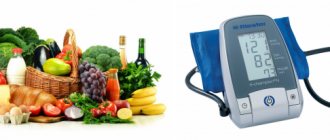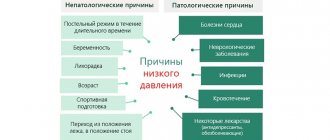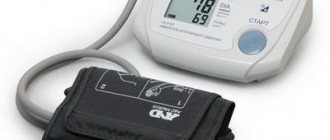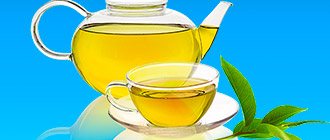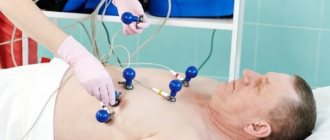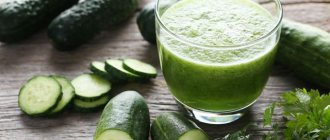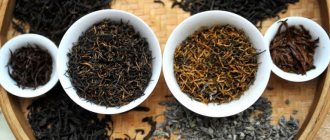Normal blood pressure levels have long been determined by the World Health Organization and we are not talking about the notorious 120 to 80 mmHg. An adequate level is in the range of 100-140 by 60-80 mm, and these are not hard numbers.
According to research, these levels may shift slightly in one direction or another, depending on the individual characteristics of a particular person’s body. A whole group of heterogeneous factors affecting the constant or so-called operating pressure level should be taken into account.
A blood pressure of 100 over 60 is quite normal in most cases. But even here you need to build on the individual norm of a particular person. There are quite possible options.
So, in a chronic hypertensive patient and a patient on the verge of hypertension, readings of 100 to 60 mmHg will cause a clear deterioration in general well-being, this is hypotension.
If we are talking about another category of patients, it is quite possible that the indicated level is a variant of the norm. It is possible to say unequivocally only after specialized research.
Normal blood pressure parameters
Blood pressure (BP) indicates the strength of myocardial contraction and arterial tone. Indicators change with diseases of the kidneys, thyroid gland, and also during pregnancy. The pressure rate is determined by three parameters:
- Upper or systolic blood pressure indicates the strength of contraction of the myocardium - the heart muscle.
- The lower value is diastolic blood pressure, indicating the degree of tension of the vascular walls in the period between heartbeats.
- The difference between the top and bottom numbers is called pulse pressure.
Myocardial contractility affects the level of systolic blood pressure. The lower figure directly depends on the tone of the artery walls, as well as on the volume of circulating blood.
Important! Pulse pressure normally varies from 35 to 50 mm. For young and healthy people, the ideal difference is 40 mm. Deviations of the indicator towards a decrease or increase indicate a pathology that requires treatment.
In medicine, normal pressure is considered to be 120 to 80 mm. RT. Art. Cardiologists use the term working pressure at which a person feels comfortable. But numbers above 140 over 90 mean arterial hypertension, and below 90 over 60 – hypotension.
Which doctor should I contact?
If you have a problem with blood pressure fluctuations, you should contact a cardiologist. The doctor will conduct a medical examination and prescribe conservative treatment according to an individual plan, taking into account an analysis of the actual indicators of the body as a whole.
Read also: Treatment of purulent wounds at home
To clarify the reasons, visit a therapist and neurologist. A comprehensive study and diagnosis will allow you to quickly determine the correct cause of the pathology and prescribe effective treatment in accordance with the needs of the body.
For whom 100 by 60 mm RT. Art. – norm
For most young people, mainly women, a constant pressure of 100 over 60 is normal. This indicator occurs:
- with normal or low weight,
- for non-smokers,
- athletes,
- physically active,
- with constitutional features.
Important! If 100 to 60 remains constant, and there are no complaints and you feel good, there is no need to take therapeutic measures. This blood pressure value does not pose any danger.
Short-term blood pressure lowering and first aid
In healthy individuals with normal blood pressure, the readings may drop to 100 to 60. The following factors contribute to this:
- abruptly getting out of bed - orthostatic hypotension,
- overheating in hot weather or on the beach,
- dehydration,
- standing on your feet for a long time,
- staying in a stuffy room.
Therapeutic measures are provided when symptoms appear - darkening of the eyes, dizziness, pallor of the skin, severe weakness.
First aid:
- Place the patient on his back without a pillow.
- Raise your legs above your torso.
- Give 20-30 drops of eleutherococcus extract, tincture of Schisandra chinensis or ginseng to drink.
Phytostimulants of plant origin increase blood pressure and improve cerebral circulation. If you don't have medicines at hand, call an ambulance. While waiting for doctors, give fluids to drink.
In case of hypotension due to dehydration, the volume of circulating blood is replenished by taking water, sweet tea, or compote. If your blood pressure drops after getting out of bed, coffee in the morning helps. For 2–3 weeks, it is recommended to take tonic herbal herbal preparations: eleutherococcus, lemongrass or ginseng in the first half of the day. The course of treatment is 2–4 weeks, 20 drops twice a day.
How to increase blood pressure with medications
The most effective and powerful medications that can quickly normalize blood pressure levels are:
- Fludrocortisone. Prescribed for dizziness and faintness.
- Niketamide. Available in the form of drops and injections. Able to quickly normalize blood pressure levels at home.
- Heptamil. A non-toxic and effective drug that has a beneficial effect on the functioning of the heart and blood vessels. Take with a sharp decrease in blood pressure against the background of a pre-fainting state.
- Epinephrine. The effect of increasing blood pressure is achieved through the effect of the drug on vasoconstriction.
Fludrocortisone will help normalize blood pressure
In case of single fluctuations in blood pressure levels, it is recommended to use lighter and less dangerous herbal-based drugs.
- Ginseng tincture. It has a tonic effect, strengthens vascular walls and increases the body's resistance. Quickly neutralizes the phenomenon of low blood pressure.
- Eleutherococcus extract. It is characterized by a mild effect on cardiovascular activity and provides an increase in blood pressure by normalizing blood circulation.
- Pantocrine. Acts on the central nervous system, stimulates blood flow in the vessels of the brain.
- Schisandra tincture. It has a general strengthening and tonic effect.
How to raise blood pressure using folk remedies
Homemade folk remedies that quickly increase blood pressure include coffee, tea with lemon, nut kernels or dark chocolate.
Tea can help raise blood pressure at home
Auxiliary folk recipes for increasing blood pressure
- Rosehip tea, drink half a glass every day. 2 tbsp. l. pour 250 ml of boiling water over the berries and let it brew for 10-15 minutes.
- A decoction of red rowan leaves. Let it brew for about an hour and add 1 teaspoon to the tea. This strengthens the vascular walls.
- A herbal infusion of nettle, chicory (root), plantain and dandelion leaves has an excellent tonic effect. Pour boiling water over the ingredients. The infused decoction is taken 50 ml 3 times a day before meals.
Read also: What does urine analysis according to Nechiporenko show?
A decoction of rowan leaves is an effective remedy for increasing blood pressure.
Reducing blood pressure to 100 to 60 in older people
If such pressure appears at an advanced age or in persons suffering from hypertension, signs of circulatory failure develop:
- darkening in the eyes,
- nausea,
- dizziness,
- blurred vision,
- pale skin,
- severe weakness
- drowsiness,
- shallow breathing,
- cold sweat,
- depression,
- fainting is possible.
See also: List of high blood pressure medications for older people
If the decrease in blood pressure is not associated with taking antihypertensive drugs, older people should consult a doctor. The reasons can be very different - cerebrovascular accident, the initial stage of myocardial infarction.
A sharp decrease in blood pressure from 100 to 60 - first aid
A person's blood pressure is 100 over 60 and is dangerous if it has dropped quickly from normal levels. This happens in the following cases:
- blood loss after injury,
- a consequence of prolonged lying position of the patient,
- severe infections
- diarrhea,
- taking diuretics and antihypertensive drugs,
- internal bleeding from the stomach or intestines,
- physical exhaustion,
- lowering blood glucose in diabetics,
- allergic conditions,
- paroxysmal tachycardia,
- atrial fibrillation,
- myocardial infarction,
- taking drugs.
In such cases, emergency assistance is required. A sharp decrease in blood pressure is dangerous due to disruption of the blood supply to vital organs - the brain, heart.
What to do if your blood pressure drops quickly:
- without wasting time, call an ambulance,
- put the person on his back with his head down, while raising his legs,
- In the hospital, during infections, doctors restore the volume of circulating blood with intravenous drips of saline. At the same time, antibiotics are used
- in case of blood loss after injury, plasma and rehydrants are administered.
Important! Do not try to diagnose on the Internet and treat using traditional methods. Losing time can cost a person his life.
What to do if you have low blood pressure and a high heart rate
First of all, let's define it - the normal heart rate (HR) in adults varies from 60 to 90 beats per minute. The parameters depend on body position, time of day and physical activity. If the pressure is 100 over 60 and the pulse is 60, no measures need to be taken - these are normal parameters.
Completely different reasons can cause a blood pressure of 100 over 60 against the background of a pulse above 90 per minute. In most cases, tachycardia is observed with the following pathology:
- heart disease,
- state of shock
- taking certain medications,
- blood loss or dehydration
- vegetative-vascular dystonia.
Treatment begins with a diagnosis. To do this, you need to see a doctor who will do an examination of the patient - an ECG, a blood sugar test. Important! Until the cause of tachycardia is determined, you should not take any medications for the “heart” - they can further lower your blood pressure and speed up your pulse.
If the person's condition is poor, call an ambulance. Therapeutic tactics depend on the cause that caused hypotension with tachycardia:
- in case of shock, resuscitation measures are carried out,
- in case of bleeding, cardiotonic drugs are indicated,
- in case of a heart attack or dangerous arrhythmias of the patient, a complex of resuscitation measures is carried out.
For tachycardia in some patients, it is enough to adjust the dosage of regular medications. Rapid heartbeat caused by stress is relieved with sedatives.
Signs of hypotension
Symptoms of hypotension are manifested not only by the characteristic throbbing headache in the temples and back of the head, nausea and vomiting, pale skin and profuse sweating. During attacks, you may feel dizzy or even faint.
The patient becomes weather-dependent, lethargic, weak and constantly tired. He constantly lacks air even with minor physical exertion. At the same time, performance, attention, and concentration decrease. Your health worsens, your limbs get cold in the heat, you constantly want to sleep.
Vegetovascular istonia
Often there is a blood pressure of 100 over 60 in combination with a pulse of 110 per minute with vegetative-vascular dystonia. With this disease, a person must be able to help himself. First of all, you need to relax and lie down with your legs elevated. A tincture of motherwort or valerian, or tea with mint will help you calm down. You cannot drink coffee or alcohol in this state.
Giving up bad habits will help prevent palpitations and low blood pressure during vegetative-vascular dystonia. Smoking and alcohol negatively affect the heart and nervous system. To get rid of the disease, it is recommended to reconsider your lifestyle - the body needs a full night's sleep and a balanced diet.
The complex of therapeutic measures includes various types of therapy:
- To stimulate vascular tone, it is recommended to take a contrast shower daily.
- Exercise, brisk walking, and swimming strengthen the heart and nervous system.
- Drug treatment consists of drugs of various groups - sedatives, cardiometabolic, vasodilators and vitamin complexes.
- Phytostimulants of plant origin are taken in courses of 2–3 weeks. Eleutherococcus, ginseng or Chinese schisandra drink 20-30 drops 2 times a day.
- It is important to learn to control your emotions. If you are nervous, massage the anti-stress point located at the bottom of the chin.
Also, pay attention to the daily menu. A proper diet consists of meat, fish products, vegetables and fruits. Depleting diets sooner or later lead to disruption of the structure of the vascular wall, heart muscle and all other organs.
Treatment of arterial hypotension with drugs
To date, no specific therapeutic course for hypotension has been developed. First of all, patients are recommended to normalize their daily routine. At night, the body should rest fully, and during the day you should try to avoid nervous overload, stress, and overwork. Equally important is proper nutrition and taking vitamin and mineral complexes.
There are times when the female body requires medicinal support. Among the medications, depending on the symptoms, the following drugs may be prescribed.
Adaptogen Group
These are preparations made from plant or animal raw materials. Their purpose is to increase vascular tone, reduce fatigue, and increase performance. Medicines in this group have a positive effect on the functioning of the entire cardiovascular system, eliminate lethargy, drowsiness, and tone the entire body. The most effective drugs from this series are recognized:
- Pantocrine;
- Rhodiola tincture;
- Saparal;
- Motherwort tincture.
Some varieties of red wine, such as Cahors, are powerful adaptogens. Take it as a medicine, a dessert spoon in the morning and evening.
Alpha adrenergic agonists
Drugs in this series are prescribed for sudden drops in blood pressure, hypotensive crises, and hypotension during menopause. Medicines stimulate alpha-adrenergic receptors, which helps to narrow small and large vessels and normalize the volume of circulating blood. Thanks to this action, efficiency increases and drowsiness decreases.
In addition, drugs from the group of alpha-adrenergic agonists are powerful stimulants of the central nervous system. Drugs such as Midorin, Gutron, Milamin help increase blood pressure and help quickly recover from heavy mental stress. But their use is contraindicated for problems with heart rhythm, hyperfunction of the thyroid gland, and renal failure.
Analeptic drugs
These drugs stimulate the vasomotor center and the functioning of the spinal cord. Such drugs include Akrinor, Etilephrine, Nitecamide. Medicines in this group quickly tone the body and reduce the severity of symptoms of low blood pressure.
Nootropics
Drugs from this series stimulate cerebral circulation and normalize cardiac activity. They improve metabolism in cerebral structures, participate in redox processes, and improve the consumption of oxygen and glucose by brain tissue. Nootropics also improve the ability to concentrate, stimulate memory and thinking processes.
Most often, patients are prescribed Piracetam, Actovegin, and Glycine to increase blood pressure and improve blood circulation. In more complex cases, complex treatment may be prescribed, including nootropics as an addition to the main course.
Caffeinated preparations
Such drugs are prescribed to patients in case of very low blood pressure, chronic progressive hypotension. Caffeine has a beneficial effect on cardiac activity and the functioning of the cardiovascular system, especially when their performance is inhibited.
Hypotension can lead to the development of a stroke or heart attack.
Indications for the use of these medications are chronic drowsiness, decreased mental and physical performance. Caffeine tablets help reduce headaches, irritability, and help you recover faster after a hard day at work.
